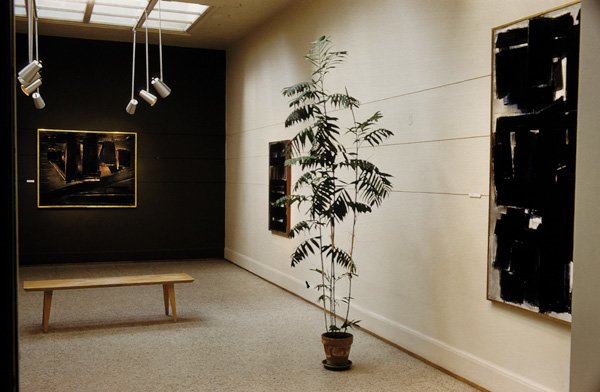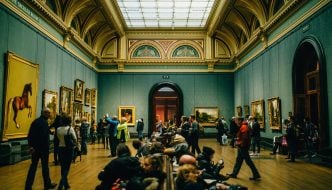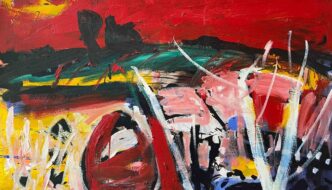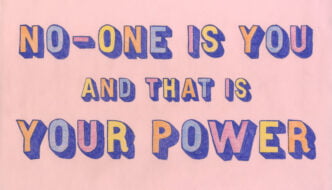
Photo Credit: Gene Pittman.
Surely, it can’t just be me that’s noticed this. Every time I enter an exhibition at the moment there they are. Plants. Bloody everywhere.
I’ve seen this coming for a while now, getting my first inkling while studying for my undergraduate degree that things were beginning to get a bit leafy. But thinking back, that was in 2010. We were still part of the EU, still getting acquainted with David Cameron, and Donald Trump was still running ‘universities’.
As is sort of standard within art education, throughout your time studying you slowly begin to see certain aspects from the most critically acclaimed exhibitions drip into a programmes shared student consciousness. I remember, for example, Francis Alys had just opened at Tate Modern when suddenly everybody seemed to realise that no longer were video cameras fixed permanently to the ground and that a shaky hand didn’t equate to being daft or bad work.
This isn’t a problem—far from it, I believe. And so perhaps the beginning of household plants cropping up in artworks was from a show I missed around this time? Either way, what I cannot comprehend is that to this day, they continue to do so in exactly the same manner. 6 years later, when we are no longer part of the EU, no one quite knows where David Cameron has gone, and Donald Trump is the ruddy President-elect.
So this alone begins to confuse me when I attempt to read and understand the implication of plants included as part of an exhibition. I see them so regularly that they are coming at me not just as plants but also with an extensive exhibition history. And just to clarify that when I mention a ‘plant,’ I am meaning some form of household potted plant.
One that is still in its original plastic pot being the most common but that is not to exclude the occasional artists own handmade and badly thrown ceramic vessels.
I do enjoy seeing a plant. I like how they look but I quickly begin to worry that maybe this is the same mindset and tactic as the artists who are using them. Happy to just pop them into an exhibition as they are aware that a plant will always look great in a gallery environment no matter if it’s a white cube or run down and semi-dilapidated space.
But what does it all mean to keep finding our soil inclined pals so far away from home exactly? As they catch my gaze I immediately reel off annoying, single word subjects from the top of my head – nature, climate, pollution, interior, exterior, domestic, etc. Throwing them at the plant before me and hoping one may stick. As if by just alluding to a ‘hot’ topic the artist is engaging the rest of the work being presented in a conversation and by association, me too.
But this only continues to lead me up a dead end.
A few times I have been informed by gallery staff or rhetoric-laden supporting texts that the plants within the space refer to offices or public spaces but I continue to find that a hard pill to swallow. For having worked in a number of offices, never have I seen a potted plant standing in the middle of the floor and looking so healthy. In fact, the only office plants I have experienced have been plastic, dead or well on their way.
It leads me to believe that at present, to find any number of household potted plants included within an exhibition has become a calling card for a very particular type of artist. The one who is laden down with heavy theory, critique, or texts. Their work often includes sharp edges and/ or precise measurements (irrespective of medium) and the plants, scattered ‘aimlessly’ around and directly on the presented works, to them become almost a signature of expression. The equivalent of Pollock and his incessant drips. Reassuring us they are definitely not as boring as their work.
I’m aware that there is no definite or singular answer of what anything means within visual art and so an element of this text is nothing but in vain and honestly, I am happy with that. I cannot, however, help but feel that this continuing trend of using household plants in contemporary art, has just become a bland and trendy motif that keeps re-appearing, irrespective of location or history and that the artists doing it are instead becoming ever more cringe worthy. As they each try to reinvent the plant as an original addition within their own ‘individual’ work. Even going so far as having witnessed numerous plants referred to by their Latin name on material list. Which I assure you now, does nothing but incriminate you further.
In a recent discussion with a friend, it was suggested that perhaps these plants, I continue to keep coming across are actually just a material/object to suggest a familiarity. A theory I’ve continued to mull over long since the conversation finished and possibly holds much truth. But still, as I press the buzzer that I’m not entirely sure works, in an attempt to get the attention of the committee member who is able to give their time for free, to let me into the exhibition I’m not even sure I want to see – the first thing I find is a series of small areca palms (or Chrysalidocarpus Lutescens if that was you!) and the idea that these plants I continue to encounter within an exhibition context may all be alluding to some kind of shared message or consciousness. This phenomenon makes me feel deflated and all too aware that so many artists are content to just adhere and continue to rehash ideas, techniques, and forms by those before them, irrespective of context.
Plants are microcosms of greatness. Individual, self-contained factories that will continue to thrive long after we are gone. The artists temporary encasement of these life forms within an art space regularly struggles to operate as little more than decoration to otherwise unrelated works and this possible familiarity of an object does little more than draw viewers to the very periphery of what is they are experiencing. Instead, I find the plant offers us a hidden exit. Away from the dry and stagnant situation you find yourself in, and instead, able to enter a realm of Kantian wonder at the glory of nature by way of ignoring the environment you are within. You leave the exhibition with little or no recollection of what it was that you just experienced but instead, remind yourself to pick up a plant on your way home and that this time you will not forget to water it.
Filed under: Art & Photography
Tagged with: art, exhibition, Gene Pittman, Plant, Shrubbery, Tate Modern



Comments